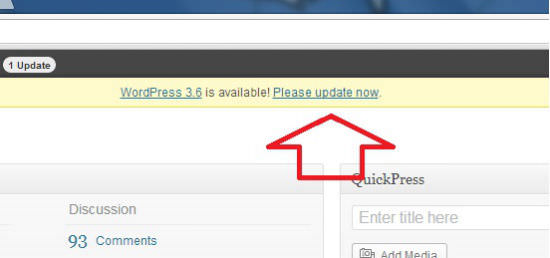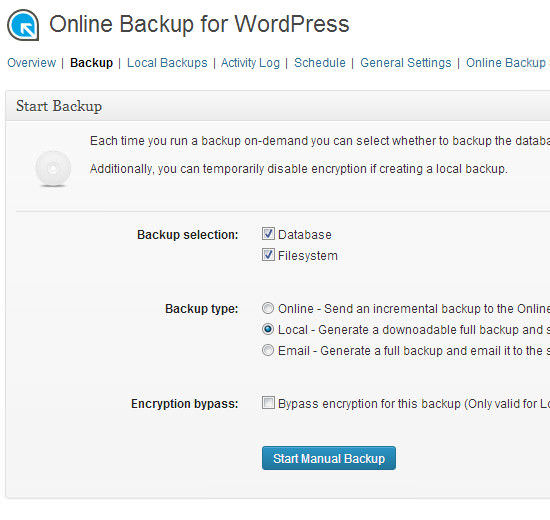How To Stay Cool When Your Client Wants To Maintain Their Own WordPress Site
So your client doesn’t want you to maintain their website for them. I encounter this a lot working with DIY-minded small business owners, and I used to dread it - I mean really dread it. Back in the day, allowing your client access to a website meant constantly fixing it after they broke it. Or worse, they would break it then try to fix it themselves after 3-hours of researching the error code on Google. Yikes.
Nowadays, however, the improvements in the WordPress ecosystem have made the prospect of a client-maintained website much less frightening. After a few years of trial and error across dozens of client-maintained projects, I’ve developed an internal checklist designed to minimize the drama.
First of all, here’s some general best practices that we employ at Small Biz Triage.
 Here are the themes and plugins we use at Small Biz Triage on client-maintained website projects.
Here are the themes and plugins we use at Small Biz Triage on client-maintained website projects.

- Avoid HTML - Rock the Shortcode - Some clients will know HTML … from 10-years ago. Confession: I only found out that ‘CENTER’ tags were discouraged just last year. Embarrassing, I know. But most good theme frameworks and plugins offer great shortcode support, and its easier to teach than CSS. It becomes especially important when handing off a site to a client who loves updating their sidebars i.e. testimonials.
- Color in Between the Lines - Don’t get me wrong, I love a well customized website, but the more we can stick to the out-of-the-box features offered by WordPress (and the theme developer), the less things are likely to break. I know you can hack the core files … but don’t. Your fix may survive the next 4 WordPress updates … but it will likely get annihilated when WordPress 4.0 arrives. I’ve gotten late night emails from former clients from 2009 whose website broke when they finally decided to dust off the how-to guide I made for them.
- Use a Child Theme - If a client is maintaining the site, it means they should also be clicking that little update notification in the gray bar when it appears to keep things stable and secure. A child theme will protect all of those cool design and usability features you painstakingly developed for them.
- Be Responsive - Oh, and finally, stop giving clients websites that aren’t responsive. I got TWO calls from small biz owners this week who blew $5K+ on a custom WordPress theme that is NOT responsive. And their target markets were a mobile savvy crowd.
 Here are the themes and plugins we use at Small Biz Triage on client-maintained website projects.
Here are the themes and plugins we use at Small Biz Triage on client-maintained website projects.
THEMES
If the client is on a ridiculously tight budget, consider building your client a child theme with one of these well-supported, responsive focused, premium WordPress themes providers. I have used all three on multiple projects with great results … and most importantly happy clients. WooThemes - Best of the batch due to an incredible family of plugins (WooCommerce) that integrate beautifully with the design. Their shortcode support is also amazing. Elegant Themes - Some great responsive themes with great documentation. Lowest price of the three. Kriesi.at - Progressive designs, with some phenomenal features - especially their portfolio widgets. Great for clients in a creative field.PLUGINS
Note that some of the themes listed above include built-in support for the plugins listed (i.e. many WooThemes)Optimize / Track
WP Super Cache / W3Total Cache Both are quite good, but will require a simple .htaccess file hack to enable, so it’s best if you get that sorted out before handing over the keys to your client. We all know that a caching tool is a no-brainer especially when your clients just love to heap on plugins onto their site. To be brutally honest, these two plugins have also created the most problems for me with clients. Specifically when they make a widget update, hit refresh on their page and see no change - of course forgetting to clear the cache. In the worst cases, clients will keep trying to update that widget twelve different ways and start getting really pissed off. Other than tattooing “clear your cache after site updates” on their forehead, there’s not much that can be done to avoid it. WP SEO by Yoast - All-in-One SEO Pack is another option, however the version by Yoast boasts a more intuitive interface. Better for your clients who are self-maintaining. Its built-in sitemap generator is an added bonus. BWP Sitemaps is a good solution if you opt to use All-in-One SEO Pack. Google Analytics by Yoast My favorite thing about this plugin is that it will track out-bound clicks which normally requires a messy in-line coding solution that your clients will rarely remember.Secure / Backup
BulletProof Security This free plugin only becomes important when you don’t have it. I’ve been victim to .htaccess injection/malware attacks four times over the years, and the common element was total lack of a proper security plugin. With most updates, this free tool will show an annoying “your .htaccess files is no longer secured” which can be cleared by refreshing the browser, or by following the on-screen direction on re-securing your .htaccess file post-update. It’s certainly cheaper than getting your site cleaned after a nasty injected malware attack. I will usually provide training or at least a screenshot PDF guide on usage. There are other plugins available, but this one has been best received by my clients. Akismet This is free (even though you have to remember to slide the donation dial to zero when signing for your free account), and is a robust solution for comment spam. Online Backup This is hands down my favorite plugin … simply because I can become my clients’ hero after “magically” recovering a version of their site that is only a week (or even a day) old. Usually, I’ll instruct my client to run a local back-up and download it into Dropbox as a failsafe (though they usually don’t) ;-)
Interact / Convert
Contact Form 7 A slick little tool that makes form building a cinch. Its shortcode support is unmatched, allowing you to drop custom forms into pages, posts and widgets. I’ve even dropped it into a custom theme’s content blocks with little issues. Nice Contact Chimp Though this tool is new to the marketplace, I would consider this a must-have tool for your clients who are active MailChimp users. It syncs your Contact Form 7 submissions with your MailChimp email database. So if someone signs up for your service on the, say, Seattle, WA landing page, their information will be logged into the WordPress database AND the appropriate group in MailChimp (i.e. Location > Seattle). LTW Testimonials You may not need this one if your theme framework has a Testimonials custom post type such as those found in most of the recent responsive WooThemes. But if you do, it is dreadfully simple, supports categories, and yes, has shortcode support. Disqus A must-have for clients with active blogging habits. It will give their site a healthy dose of steroids replacing WordPress’ ugly comment system with features such as nested comments, comment up/down voting, etc… The social media benefits are huge as well.Maintain
Tiny MCE Advanced Customizing your client’s website WYSIWYG editor is probably the best way to protect them from themselves. This free plugin replaces the simple editor provided by WordPress. I like to customize the buttons visible in the editor to keep it clutter free. I’ll also disable buttons that are likely to cause problems with a client (CSS button as an example). Broken Link Checker A lean little plugin that does a stellar job notifying your website owner(s) of broken links. Recently I discovered my client had been copying/pasting full images into their posts due to the high volume of broken image link notifications from this tool.For Bloggers
If your client is running an active blog, these little free gems can help improve their user experience. WP JQuery Lightbox - This replaces the link to an image attachment page with a cross-browser compatible lightbox. WordPress Popular Posts - A customizable widget to highlight popular posts. LinkWithin - A “you might also like” recommendation engine. Disqus has this feature built-in, but LinkWithin’s design is much more lean / minimal. FD Feedburner - a fairly straightforward tool for redirecting the RSS Feed to Google’s Feedburner tool. Social Metrics - I first heard about this slick little social media stats plugin from the guys over at Boagworld. I would only install this if social media shares are a key metric in your client’s marketing strategy (which is the case for most bloggers). Well that’s it. Let me know what I got right (and what I got wrong) in the comments below. Any advice that will improve my client website owners experience is worth taking.About The Author
(dpe)Nate Wright is a small biz owner, full-time single dad, and kingdom builder. When he’s not busy running Small Biz Triage, he can be found driving without GPS (or gas money) to some “exotic” location with his 12-year old daughter Anna. Check out his newsletter: Uncensored Advice for the Small Biz Owner

Good one! I was more of looking for a document that could be shared of the do’s and dont’s on wordpress! And also pictorial document showing how to create new post, to select category, to edit a post, to update a plugin and so on!
There are quite a few great WP Tutorials (especially on YouTube), which is why I avoided writing that type of post. If you need more help, get signed up for our newsletter ( http://smallbiztriage.com/newsletter ) – we regularly give out free one-on-one training via Google+ Hangouts.
Take care,
– Nate –
Great post Nate! What are your thoughts about giving the client access to premium plugins like Gravity Forms?
Tom,
Never used GravityForms with a client before. Though not as versatile, ContactForm7 is my go-to forms plugin due to its simple shortcode implementation. As far as other premium plugins … every once in awhile. One of my coaching clients uses questionnaires a lot, so we purchased her a premium survey builder that was not very flexible, but seriously easy to use.
How about you?
– Nat e –
Great post and very well written, all the tips are very important and useful and thanks again for sharing it with your readers.